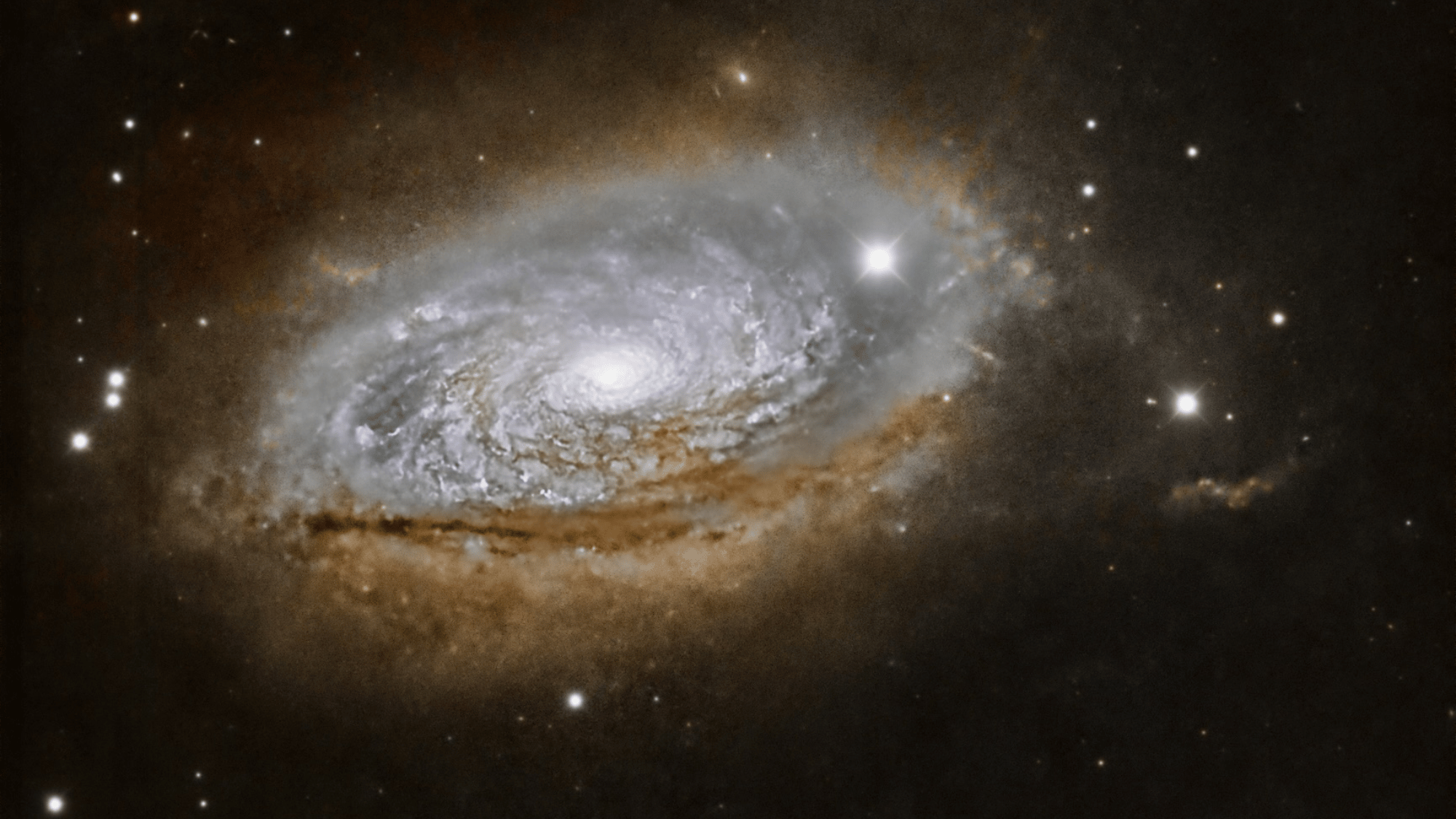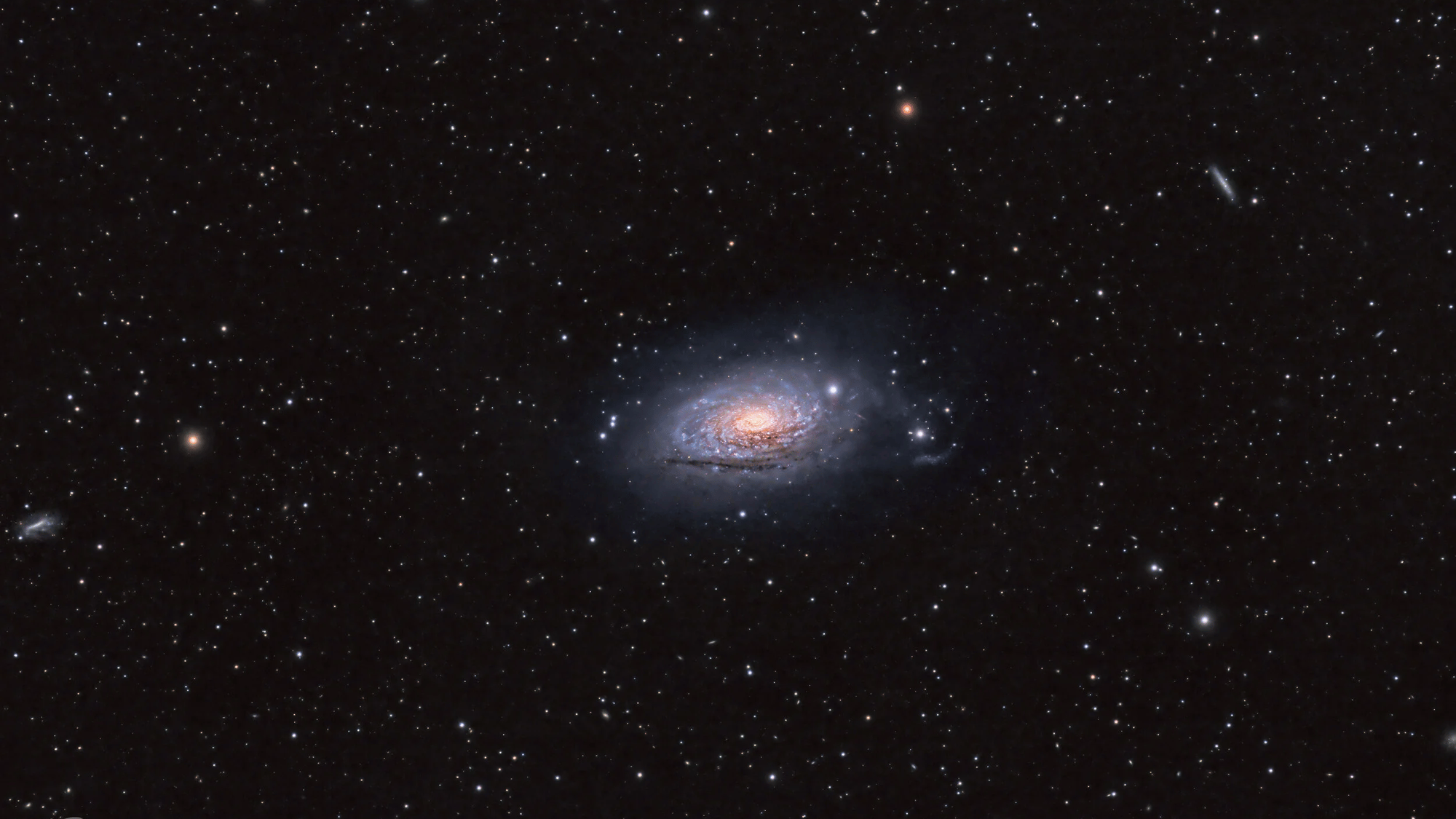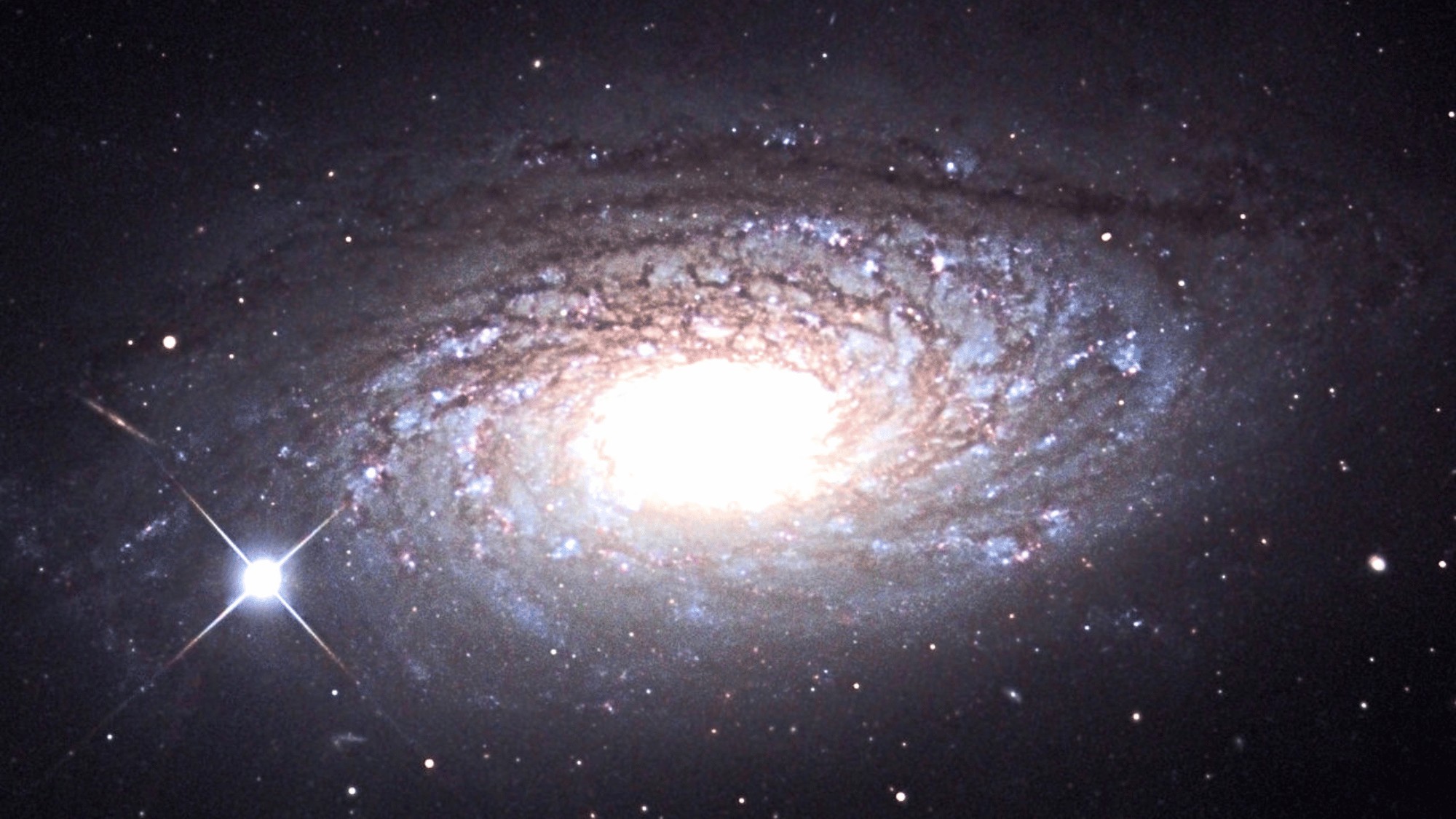The universe is filled with countless galaxies, each with its own story to tell.
Among them, the Sunflower Galaxy, also known as Messier 63 (M63), captures attention for its graceful and bright spiral shape.
Astronomers have studied this galaxy for centuries, drawn to its structure and light that reveal how galaxies form and evolve.
Even from millions of light-years away, it stands as a reminder of the beauty and mystery that exist beyond our planet.
Learning about the Sunflower Galaxy helps people appreciate how vast the universe is and how every distant point of light holds a deeper story waiting to be explored.
What Makes the Sunflower Galaxy Different
This Galaxy is a striking spiral galaxy located roughly 27 million light-years away in the northern constellation Canes Venatici.
Unlike classic spirals with smooth, defined arms, this galaxy belongs to a special group known as flocculent spirals.
In such galaxies, the spiral arms don’t appear sharply drawn but instead look patchy, soft, and feathered, giving them a textured, almost cloud-like quality.
This subtle patterning creates the impression of gentle swirls spreading outward from the galaxy’s luminous core.
When observed through telescopes, its radiant center paired with these delicate, curving arms produces an image revealing a sunflower in bloom.
Both scientifically interesting and visually amazing, it remains a favorite subject for astronomers and astrophotographers alike.
History of Messier 63’s Discovery


Image Source: Telescope Live
The Sunflower Galaxy (Messier 63 or M63) is not only visually captivating but also holds a special place in astronomy’s history. Its discovery and study helped scientists gain a deeper understanding of spiral galaxies and their diverse structures.
| Aspect | Details |
|---|---|
| Official Name | Messier 63 (M63) |
| Constellation | Canes Venatici |
| Distance from Earth | Approximately 27 million light-years |
| Visibility | Bright enough to be observed through medium-sized amateur telescopes |
| Discoverer | Pierre Méchain, 1779 |
|
Added to |
Charles Messier added to his famous catalog of celestial objects |
| Significance | Helped early astronomers recognize the variety and structure of spiral galaxies, deepening the understanding of galactic formation |
The discovery of M63 marked a key step in understanding that galaxies come in many shapes and styles, each telling a different story of cosmic evolution.
Key Characteristics of Messier 63
Messier 63, the Sunflower Galaxy, displays remarkable traits, including vast size, flocculent spiral arms, a bright core, and ongoing star formation.
- The Messier 63 is a large spiral galaxy spanning about 100,000 light-years in diameter, similar in size to the Milky Way.
- It contains billions of stars and is bright enough to be seen with mid-range telescopes.
- Far from grand design spirals, it has a flocculent structure, with patchy, feathered arms that give it a softer, textured appearance.
- At its center lies a bulge of older stars, surrounded by regions with active star formation.
- Astronomers believe a supermassive black hole exists at its core, a feature common in galaxies of this scale.
Scientific Significance of the Sunflower Galaxy


Image Source: Cosgrove’s Cosmos
The Messier 63 is both visually captivating and scientifically valuable, offering astronomers meaningful insight into how spiral galaxies develop over time.
This feature provides an important contrast to grand design spirals and allows researchers to compare how different spiral forms emerge and evolve.
The arms of M63 are rich in active star-forming regions and laced with dark dust lanes, both of which reveal critical details about the birth and life cycles of stars.
The galaxy belongs to the M51 Group of galaxies, which also includes the iconic Whirlpool Galaxy (M51). Observing galaxies within this group provides insight into how they interact, influence each other’s structure, and even trigger bursts of star formation through gravitational effects.
These interactions show that galaxies are not isolated but part of a dynamic cosmic system.
By combining its unique structure with its group membership, Messier 63 continues to expand our understanding of galactic growth and evolution.
Interesting Facts About Messier 63
The Sunflower Galaxy (Messier 63) offers fascinating details, from unique spiral arms to scientific discoveries that deepen our cosmic understanding.
- Messier 63 is the 63rd object in Charles Messier’s famous catalog, which was created to help astronomers avoid mistaking galaxies and nebulae for comets.
- It’s classified as an SA(rs)bc galaxy, a type of spiral with intermediate features between tightly wound and loosely wound arms, but with its own unique soft style.
- Despite being millions of light-years away, it has a surface brightness of magnitude 8.6, which explains why it’s visible through mid-sized amateur telescopes.
- Studies in radio wavelengths show that M63 has an extended hydrogen gas halo, stretching far beyond its visible spiral arms. This suggests past interactions with neighboring galaxies.
- Infrared imaging has revealed a ring-like region of star formation, giving astronomers more clues about how stars are born in flocculent galaxies.
- The light we see from M63 today left the galaxy about 27 million years ago, long before humans ever walked the Earth.
Conclusion
The Sunflower Galaxy (Messier 63) represents both beauty and significance within the cosmos.
Its glowing center and feathered spiral arms show how diverse and captivating galaxies can be, while its place in the M51 Group highlights its importance in understanding galactic interactions.
By learning about the galaxy, the person is reminded of the vastness of the universe and the many secrets still waiting to be revealed.
This galaxy not only enriches scientific study but also sparks imagination and wonder.
Looking up at the night sky, the person can feel a closer connection to astronomy and the stories written among the stars.


















